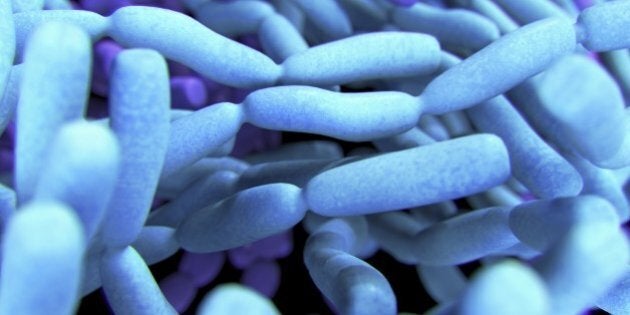
Using bacteria to control environmental troubles has been an ongoing campaign for decades. A variety of environmental species have proven their worth in dealing with oil spills, polychlorinated biphenyls, also known as PCBs, and radioactive waste. The chemicals are broken down, rendering them harmless to the variety of living species in the area, including humans.
Most of the time, the focus of bioremediation has been on chemical contamination resulting from manufacturing or harvesting. But one particularly important source for chemical contamination, agriculture, has gained significant attention over the last decade. To counter the regular use of pesticides to maintain crops, microbes have been identified as a potential resource to improve the environment and possibly, improve the safety of plant-based foods.
One particular target is the chemical chlorpyrifos. It's an organic chemical known to kill of a variety of insects. However, it also can affect several other species, including fish, land animals and humans. The effect can be quite problematic as the target of the chemical is the nervous system and can result in dizziness, nausea, confusion, respiratory troubles, and in severe cases, death.
The amount of chlorpyrifos taken in by any human tends to be far lower than the levels needed to cause these symptoms. However, there is concern for persistence both in the environment and also in the body suggesting exposure should be at worst minimal and at best, non-existent.
Therein lays the dilemma. To achieve this goal of non-exposure, crops would have to be put at risk of infestation and potential damaging losses. In a time when food security has never been more prevalent, this could pose a significant problem for farmers. The regulatory approach has varied as a result. In this light, the Environmental Protection Agency in the United States has proposed a ban on the chemical. In Canada, a different tact has been developed. Instead of a ban, a maximum residue limit has been set.
While governments attempt to find the right balance between agriculture and human health, researchers have turned to our microbial counterparts in the hope of finding species capable of breaking down chlorpyrifos. The goal has been primarily to find beneficial candidates with little concern for public health. After all, it's rare that one can get the best of both worlds. Yet this indeed may be the case.
Back in 2003, a variety of chlorpyrifos-remediating bacteria was found. This proved the path forward was at least possible. The only drawback was the nature of the bacteria, which were also crop spoilers. Using these species might reduce the pesticide level but could ultimately end up hurting the overall crop output.
The hunt continued without much movement for years. But a few years later, while examining some of the less popular literature, a few researchers came across an almost unbelievable option: probiotics. Although the information was sketchy at best, there was evidence of chlorpyrifos degradation by yogurt bacteria.
This revelation offered at least a possible route to success although there was little belief these microbes could provide an viable answer. Yet by 2013, there was more than enough information to suggest many of the species in our own intestines may have the ability to break down the pesticide. The most effective happened to be the same species known to be probiotics, with names such as Lactobacillus fermentum, and Lactobacillus plantarum. This allowed for the introduction of the concept of probiotic prophylaxis to reduce pesticide absorption.
But even as the idea of using probiotic bacteria to help humans deal with pesticides, there was still a concern in the larger context of environmental and crop sustainability. Though we may be able to deal with exposure using our own bacteria, protecting the rest of the world needs to be considered.
Now it seems that overarching goal may be possible. Last week, a group of Chinese researchers revealed how Lactobacillus plantarum can be used in corn silage to help break down chlorpyrifos as well as another pesticide, phorate. The results of the experiments revealed simply adding this bacterial species to silage can improve the breakdown of the pesticide and speed up the time necessary to reduce levels to acceptable ranges.
The idea of using probiotic bacteria to deal with pesticides on a global scale is still in its infancy. More time and testing will be needed to get to the stage where we will be using these species to resolve the current dilemma of human health and food security. Yet, the results of the collection of studies to date show just how our microbial friends can be harnessed for benefits beyond our current expectations.